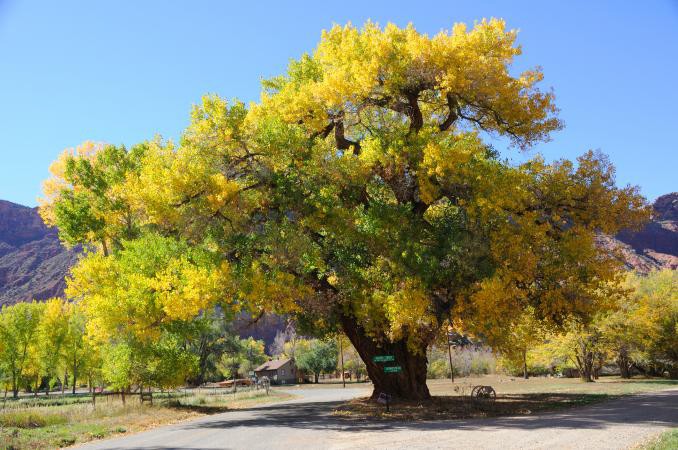For those who haven’t seen, I’ve joined the awesome and wonderful team at Joy Labs. Right now, the team is focused on creating a new communication experience called Memo. Having identified a real opportunity in the market, we are excited to begin testing solutions that empower users. Due to our overall focus, we have a foundational set of features that need to be completed in order to deliver any type of solution with real value, which sets us up well for further growth as we continue to learn.

Switching tracks for a moment…
I am in Colorado as I write this. When it wasn’t snowing (yes, we are looking at nearly a foot of snow), I had the opportunity to do some hiking in and around the foothills. The trees are changing beautifully, and I was happy to run into trees like this one.

For some reason, these two things came together for me. Some folks may recognize the mathematical nature of trees as recursive. Recursion is the process in which a function calls itself directly or indirectly, and is sometimes represented as a tree which is fractal in nature. A fractal describes situations in which similar patterns recur at progressively smaller scales (think: a trunk, a branch, a leaf).
Yay, math.
Just as a tree in nature matures and grows, so do fractal trees, and so should products. But unlike perfect, recursive fractal trees like the one above, I would argue that products should grow like natural trees: based on environmental variables.

There are reasons why a tree leans to one side or has branches that are further away from the ground. As we build products, we should be mindful of these same “environmental variables,” which may include markets, customers, technology, team capabilities, executive personalities, and more. Those who have built successful products know that these variables can have a real impact on what a product turns out to be. Your customers start asking you for certain features, while an executive asks for something else. You see how some new technology can enable you to do something you never could have done before, but you don’t have the people necessary to use it. Look at the products around you and you may be able to reflect on why the product was built, designed, and/or delivered in that particular way (particularly with those that you don’t enjoy using).
Be mindful of the environmental variables. Ignoring these variables may result in a product that could be “perfect” in an absolute sense, but entirely worthless in the real world. Just as trees do not grow in space, successful products are not built in a vacuum. It should also be noted that trees don’t start out as trees – they start in much smaller, though complete, forms. It is important to not focus on too many things in the early days of a product but to instead focus on succeeding in a small, foundational niche, first. In any case, a strong foundation is important: a trunk is not thick nor are leaves aplenty in the early days of a tree, but with growth comes further strength and support. Trees and products can grow in unexpected ways, but a positive end result can surely be beautiful.





